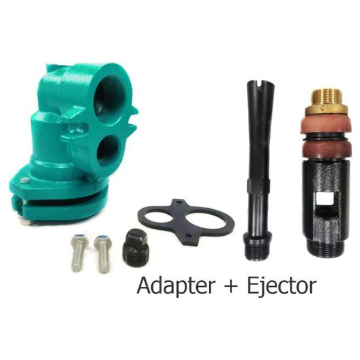Water Jetting Machines
Ridgid KJ-1750 Water Jetter
KJ-1750
1 1/4" to 4" (32 to 100mm) Drain Lines This jetter propels a highly flexible hose through 1 1/4" to 4" (32 to 100mm) lines–blasting through sludge, soap and grease blockages. As you pull the hose back, it power scrubs the line, flushing debris away and restoring drain lines to their free-flowing capacity.
₱266,000.00
Ridgid Drain Gun/Sink Machine (K-45, K-45-1, K-45AF-7), 49233
49233
Ridgid Drain Gun/Sink Machine (K-45, K-45-1, K-45AF-7)
From ₱62,800.00
LEO SHALLOW WELL JET PUMP STAINLESS STEEL HEAD 1HP
LOAJM75S
LEO SHALLOW WELL JET PUMP STAINLESS STEEL HEAD 1HP LOAJM75S
₱9,500.00
INITIAL JET 3-4
INITIAL JET 3-4
SHALLOW WELL JET PUMP MATERIAL : CAST IRON HP : 0.75 VOLTAGE : 220V - 60HZ RPM 3450
₱11,500.00
INTIAL JET 4-4
INTIAL JET 4-4
INTIAL JET 4-4 SHALLOW WELL JET PUMP CAST IRON 1.0 HP VOLTAGE : 220 V - 60HZ RPM 3450
₱12,000.00
JET WJ SERIES - WJ-201-X-EM/6
WJ-201-X-EM/6
WILO JET WJ SERIES - WJ-201-X-EM/6 MATERIAL STAINLESS STEEL HP 0.50 VOLTAGE 220 V - 60HZ RPM 3450
₱17,500.00 ₱10,875.00
JET WJ SERIES - WJ-202-X-EM/6/B
WJ-202-X-EM/6/B
WILO PUMP WJ-202-X-EM 6/B SELF PRIMING PUMP STAINLESS STEEL 0.75 HP VOLTAGE 220 V - 60 HZ RPM 3450
₱11,500.00
JET WJ SERIES - WJ-203-X-EM/6/B
WJ-203-X-EM/6/B
WILO JET WJ SERIES - WJ-203-X-EM/6/B STAINLESS STEEL 1.0 HP VOLATGE 220 V - 60HZ RPM 3450
₱12,000.00
DEEP WELL JET PUMP-1STG(NO ADAPTER) - DWP 1.0
DWP 1.0
WILO DEEP WELL JET PUMP-1STG(NO ADAPTER) - DWP 1.0 MATERIAL : CAST IRON HP 1.0 VOLTAGE 220 V - 60HZ RPM 3450
₱14,375.00
DEEP WELL JET PUMP-2STG(NO ADAPTER) - DWP 1.5
DWP 1.5
DEEP WELL JET PUMP-2STG(NO ADAPTER) - DWP 1.5 MATERIAL : CAST IRON HP 1.5 VOLTAGE 220V - 60HZ RPM 3450
₱30,000.00 ₱2,400.00
DEEP WELL JET PUMP-2STG(NO ADAPTER) - DWP 2.0
DWP 2.0
WILO DEEP WELL JET PUMP-2STG(NO ADAPTER) - DWP 2.0 CAST IRON HP 2.0 VOLTAGE : 220 V - 60HZ RPM 3450
₱31,875.00 ₱25,500.00
OPTIONAL ACCESSORIES - WL-DWP-A+E
WL-DWP-A+E
WILO OPTIONAL ACCESSORIES ADAPTER + EJECTOR APPLICABLE FOR WILO DWP 1.0
₱2,815.00 ₱2,250.00
LEO SHALLOW WELL JET PUMP CAST IRON HEAD 1/2HP
LOAJM45
LEO SHALLOW WELL JET PUMP CAST IRON HEAD 1/2HP LOAJM45
₱7,000.00
LEO WATER PUMP JET TYPE 3/4 HORSE POWER STAINLESS STEEL HEAD (3.0)
LOAJM60S
LEO WATER PUMP JET TYPE 3/4 HORSE POWER STAINLESS STEEL HEAD (3.0) LOAJM60S
₱8,600.00
Min: ₱2,250.00 Max: ₱266,000.00
₱2250 ₱266000



































